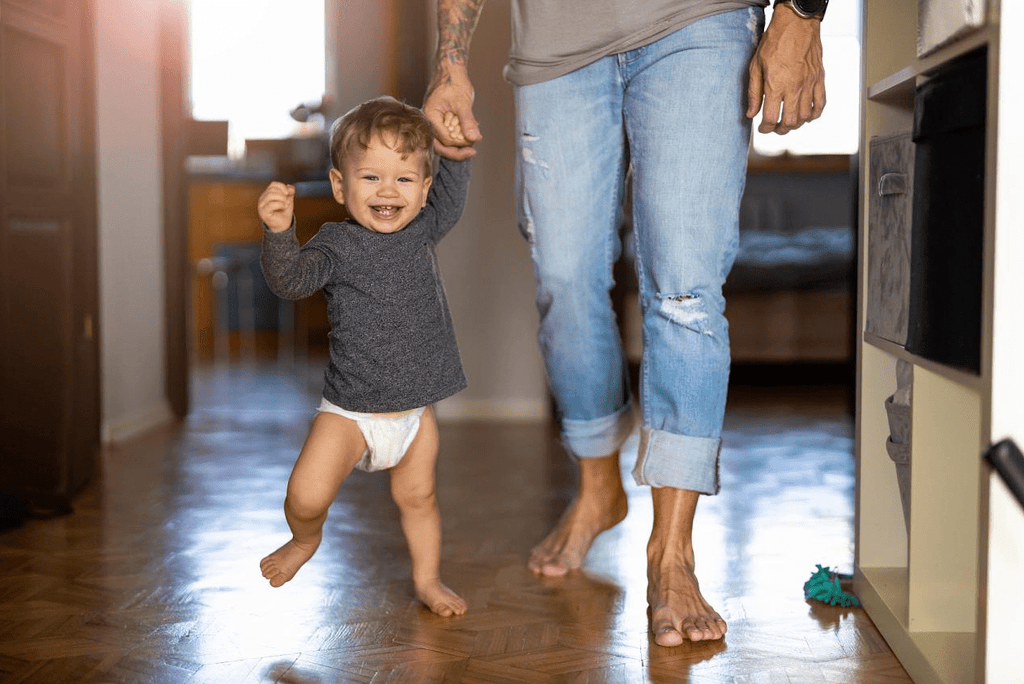3 Simple Walking Techniques to Alleviate Bunion Pain

Do you have a painful bunion? Have you noticed your shoes deforming after a few months, with the upper part tilting inward or outward? Here are three tips to reduce bunion pain effortlessly through daily walking, making each step a move away from the pain.
Tip 1: Avoid Outer Edge Walking: When you're walking, notice if you're unconsciously walking on the outer edge of your foot to protect a painful bunion. This can actually stress the muscles and joints, making the pain worse. Keep your foot flat on the ground for a more balanced distribution of pressure.
Tip 2: Avoid Duck Foot: Bunions are often linked to pronation and flat feet, where the arch collapses and the foot and ankle lean inward. To maintain balance, the body may point the toes outward, a stance known as "duck footed." This stance can increase pressure on the big toe joint, pushing the outer side of the big toe toward the second toe and contributing to the formation of bunions.
Tip 3: Anchor and Rotate: Ensure your forefoot lands flat and horizontal, distributing pressure evenly across all toes, including the big toe. When correcting your walking posture, whether from leaning outward or inward, make sure there is a gentle pulling between your big toe and second toe as your foot rotates and lifts off the ground. This gentle pulling helps your big toe separate naturally with each step.
Why Do Orthopedic Shoes for Bunions Help?
If you notice one side of your old shoe's heel wearing down more than the other, it's a sign that your body weight is unevenly distributed, leading to severe outsole wear and a collapsed, unsupportive midsole that pushes your foot to the side. The right shoe can make a significant difference in correcting your walking posture.
Wide-fit, supportive shoes with features to prevent pronation are essential for this walking technique. Look for shoes with a spacious toe box to accommodate your bunion joint and allow your big toe to apply pressure to the floor, rotate, and stretch. The uppers should be stabilized with structures like a TPU ring around the heel to prevent it from pushing inward or outward.

FitVille's Rebound Core Series sneakers are the ideal choice for those looking to correct bunions and improve their walking posture. Here's why:
Gait-Correcting Orthopedic Design: Aligns your stride for a comfortable walk.
Five Layers of Shock-Absorbing Materials: Cushions and reduces joint impact.
Extra-Wide Toe Box (Up to 6E Width): Provides space for toes to spread, reducing bunion pressure.
Dual-Density EVA Midsole: Offers targeted support and cushioning.
Shock-Absorbing Pad: Absorbs heel impact, protecting your feet.
TPU Heel Ring: Stabilizes the heel to prevent pronation and keep feet aligned.
Patented Sole Design: Ensures excellent traction and durability.
Managing bunion pain is achievable with these three walking techniques and the right footwear. FitVille's Rebound Core Series sneakers, with their orthopedic design and supportive features, are an excellent choice for those seeking relief. Embrace these tips for a more comfortable and pain-free walking experience.
References
American Podiatric Medical Association. (2020). Bunions. Retrieved from https://www.apma.org/bunions
Harvard Health Publishing. (2022). Bunions and your feet. Retrieved from https://www.health.harvard.edu/a_to_z/bunions-a-to-z
Mayo Clinic. (2021). Bunions. Retrieved from https://www.mayoclinic.org/diseases-conditions/bunions/symptoms-causes/syc-20354799
About FitVille Footwear
Just Follow us on LinkedIn, Facebook, YouTube, Instagram, RSS feed and Pinterest to catch our brand news.
What FitViller Prefers
Best Shoes to Buy

Popular Men's Shoes

Popular Women's Shoes


































